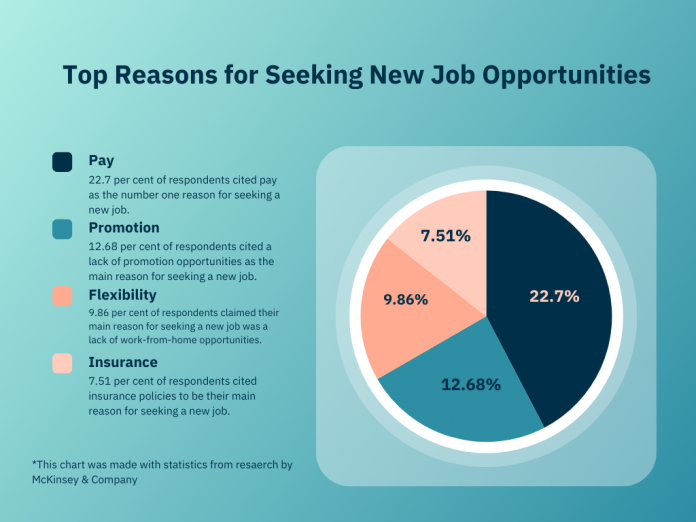Since the pandemic, the traditional office setting has undergone a metamorphosis, giving rise to flexibility, adaptability and working from home. However, some are calling for a return to the status quo. With this, employees are seeking to maintain this flexibility as it improves working-life for some.
A recent study from the Journal of Systems and Software, a journal focused on industry trends, found that few respondents wanted to return to the office. From the people surveyed, the number of employees who wished to never or occasionally work from home was only around 10 per cent. In contrast, others advocated for a more flexible or home-based schedule.
The immense support for this work system stems from the benefits of working from home extending far beyond the convenience of pajama-clad Mondays and the absence of a daily commute. This large shift in work culture has many advantages that resonate with both employees and employers.
Amid our ever-changing work culture, it is time to embrace remote work where possible as a fundamental piece of our professional landscape and as an affirmative step toward fostering a more flexible and productive work culture.
A large draw for those interested in working from home is the flexibility and life balance it provides, while others argue this aspect makes some work environments suffer. This is because remote work is often said to interfere with a team’s ability to collaborate effectively as the team is separated from the office’s common space, limiting communication to the digital world. This notion may damper the outlook of those who work in various environments or fields that require constant communication between employees.
However, a recent study from McKinsey & Company, a strategy and management consulting firm, found that remote-working arrangements are available in a surprising number of professions.
Nearly half of respondents in education and design and 45 per cent of respondents in health care reported being able to work remotely. These fields require both communication and collaboration with employees working from home, showing that this flexibility has a limited impact on various fields.
In fact, work flexibility was cited as one of the top three reasons for employees seeking new job opportunities. This is because having the flexibility to work from home, full- or part-time, allows workers to create schedules that suit their personal lives. By enabling employees to manage their time and commitments more easily, a better work-life balance is made, as people can engage in social obligations, do homework or find time to relax in a way that better suits their lifestyle than more rigid work environments.
Despite this shift toward a more flexible work culture, many raise concerns about productivity, saying businesses may experience reduced efficiency if they conform to this new standard. According to a Microsoft study, 85 per cent of team leaders say that the transition to hybrid work has made it hard to be confident in employee performance. This anxiety about productivity is said to stem from the fact that leaders can’t actually see employees anymore like they could in an office setting.
However, a National Bureau of Economic Research study found that remote work can significantly increase productivity. Based on this study, businesses that embraced remote work in sectors such as IT and finance have seen their productivity increase from one per cent between 2010 and 2019 to three per cent since the pandemic began.
Similarly, almost six per cent of workers at 715 U.S. companies showed improved productivity when working from home, according to a two-year study from 2021.
This increase in productivity stems from the flexibility of the work-from-home model. Employees can use their usual commuting time to complete more work or take time to get into a proper working headspace. The flexibility of this working model also allows employees to create more comfortable work environments that enable them to work more efficiently. This is because when they are at home, they have more creative liberty with structuring their workspace to create an area that suits their needs as best as possible.
In spite of this, people still challenge the idea of working from home when possible. They claim the shift has limited positives and that it is nothing that a more flexible office-based schedule couldn’t fix.
In some circles, the work-from-home model is seen as a COVID trend that needs further research before being considered a reasonable shift in our work culture.
In contrast, one survey found that working from home saves employees money as working from home removes the daily commute from employees’ day.
According to Statistics Canada, over 15 million Canadians commute to work daily, meaning many spend money on public transportation or gas and vehicle maintenance.
This demonstrates that this shift’s benefits extend beyond the pandemic, as commuting affects most workers daily. By limiting the commute for some workers, they can save money by not commuting and reclaim that time either for extra work or for themselves, resulting in better work-life balance and productivity.
During this point of transition, the push to work from home where possible is more than a COVID trend but as fuel for a more balanced and engaged workforce.
The shift toward remote work represents a transformative shift in the modern workplace. The pandemic has acted as a catalyst, pushing traditional office settings to embrace flexibility and adaptability. While there are calls for a return to the status quo, the work-from-home model is something workers should advocate for to create a better work culture for themselves and those who come after them.




